The ship ‘Sultana’ tied up in Sydney Harbour on the 31st day of October in the year 1856. The Reverend William Scott stepped ashore with his wife, three children and one female servant. Scott had left Cambridge University, and England, to take up his appointment as the first NSW Government Astronomer. All he needed now was an observatory.
In fact, he needed an observatory with a time ball (H10401). His astronomical observations established precise and accurate time, then the time ball communicated that time to anyone within sight. With the Governor, Sir William Denison, Scott inspected the site of Fort Phillip. Located on the highest hill in the city and visible from all points in the harbour they agreed this was the place.
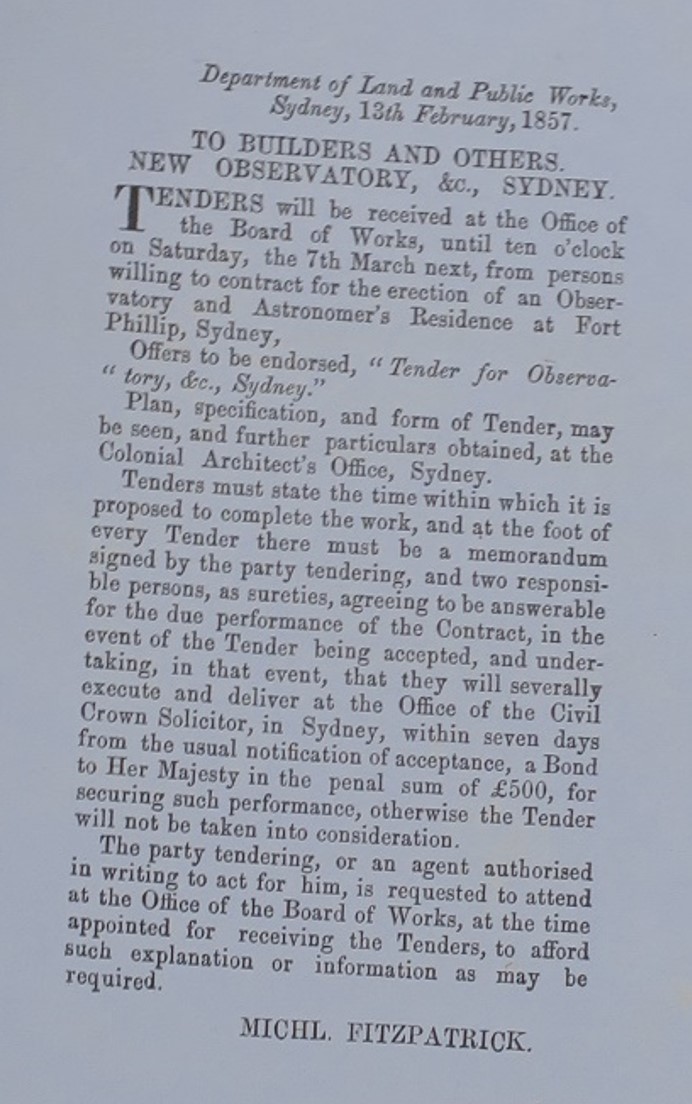
In the Government Gazette of Friday February 13 1858 (and again on Feb 17) tenders were invited from “Builders and others” for the “erection of an Observatory and Astronomer’s Residence at Fort Phillip,Sydney.” Prospective builders had just three weeks to inspect the plans, cost out and submit their tenders. A 500-pound bond was required. The invitation was placed by Michael Fitzpatrick, secretary to John Hay who was the Secretary of the Department of Lands and Public Works.
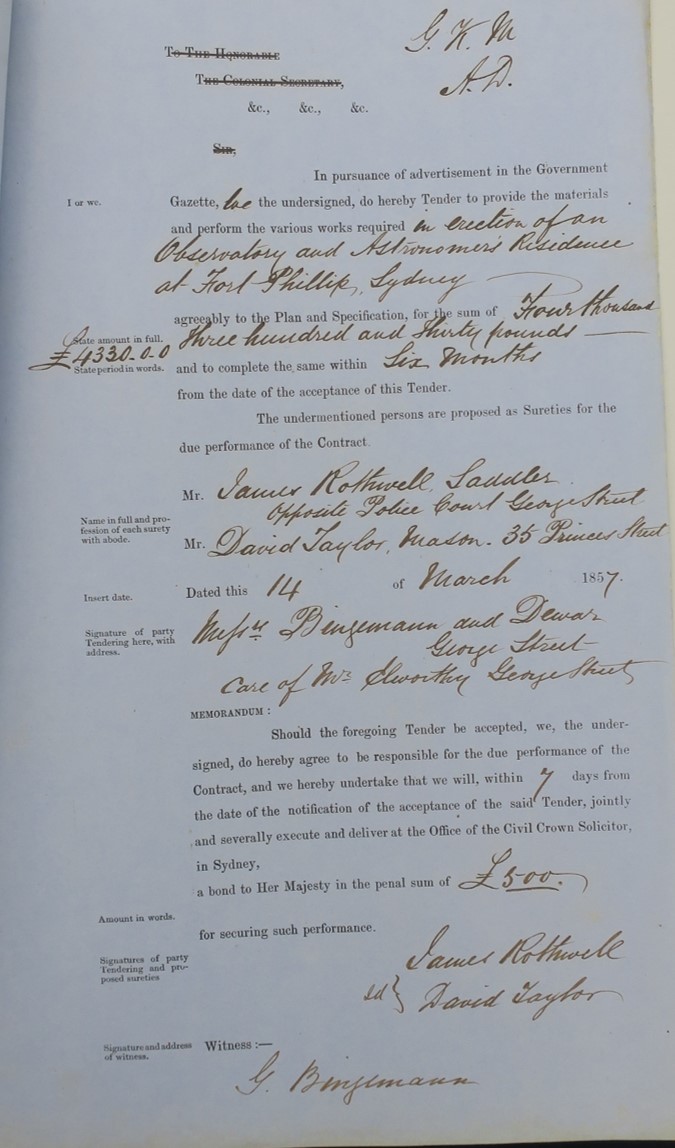
The successful tender was submitted by Charles Bingemann and Ebenezer Dewar. It is addressed to G.K.M. and A.D. – GKM is presently a mystery to me, but Alexander Dawson was the Colonial Architect most responsible for the plans of the Observatory as it was built. The 500-pound bond was put up by James Rothwell (a saddler) and David Taylor (a mason), presumably business associates of Bingemann and Dewar. Their tender was submitted on March 14, 1857 one week after it was due. Why? There is some more research to do here. Bingemann and Dewar offered to build the Observatory for 4,330-pounds and they were required to do so within six months of the acceptance of their tender.
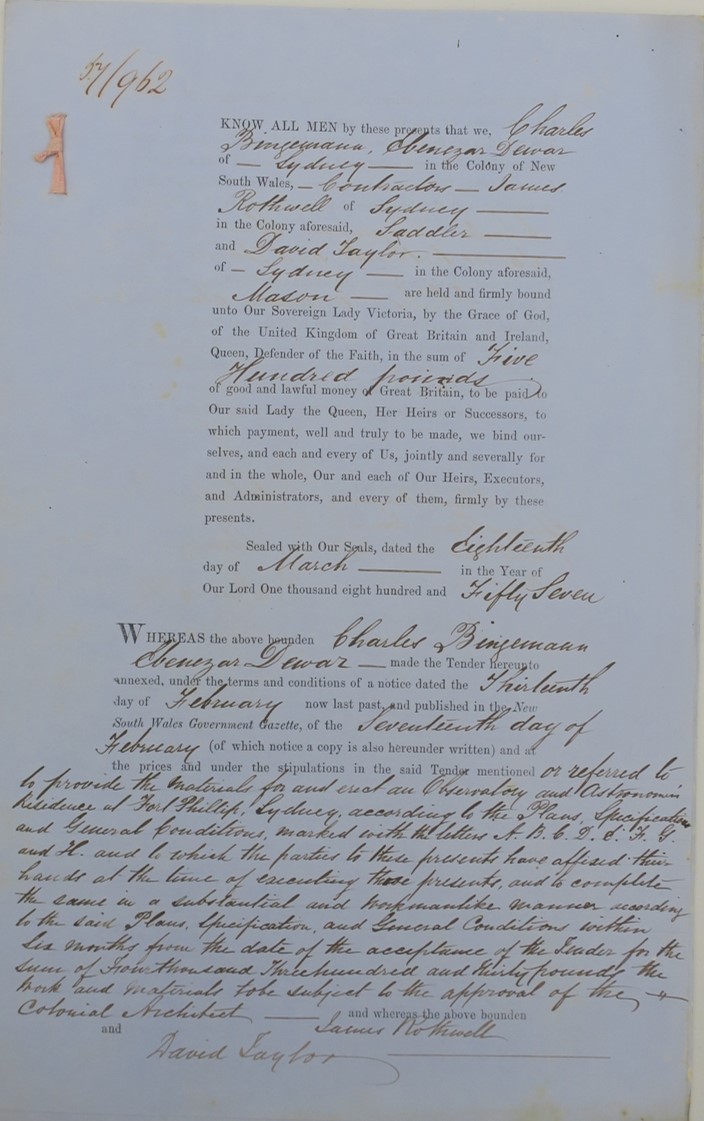
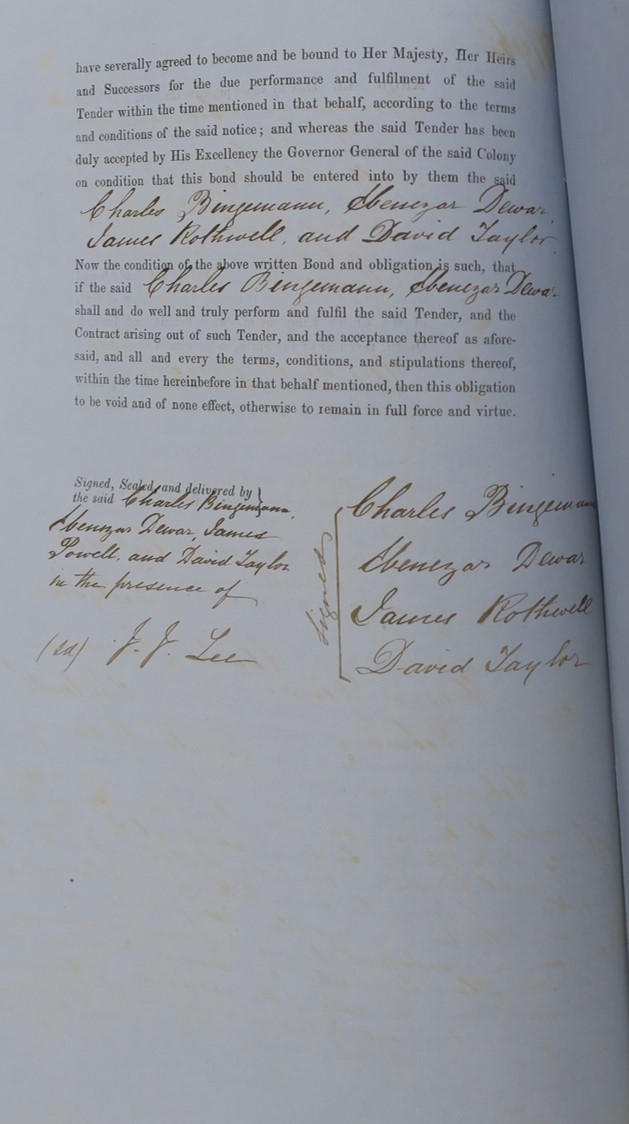
Bingemann and Dewar’s tender was accepted on the very same day they submitted it. Clearly there’s more research to do here! The contract notes they were to build the observatory according to drawings A through H – drawings I hope to sight one day. I’m not a handwriting expert but to me all the written text and the signatures appear to be in the same hand.
However, contracts don’t always run smoothly. The initial tender (as advertised on February 13) did not include a tower for an equatorial telescope (we now call this the South Dome). Scott immediately protested, an equatorial tower was added, and Fitzpatrick wrote to Dawson asking that intending contractors be made aware of the changes. This cannot have been done until after Bingemann and Dewar submitted their tender because an additional 2,400-pounds was eventually added to the contract price for the additional work. Construction took almost two years not the six months originally intended.
In addition to Scott’s request for an equatorial telescope tower someone increased the height of the time ball tower – presumably to enhance the visibility of the time ball from the harbour and surrounding country. At the time (May-September 1857) Scott was travelling around the colony setting up weather observing stations. On his return he was dismayed to discover that the time ball tower blocked views of the eastern sky from his new equatorial telescope!
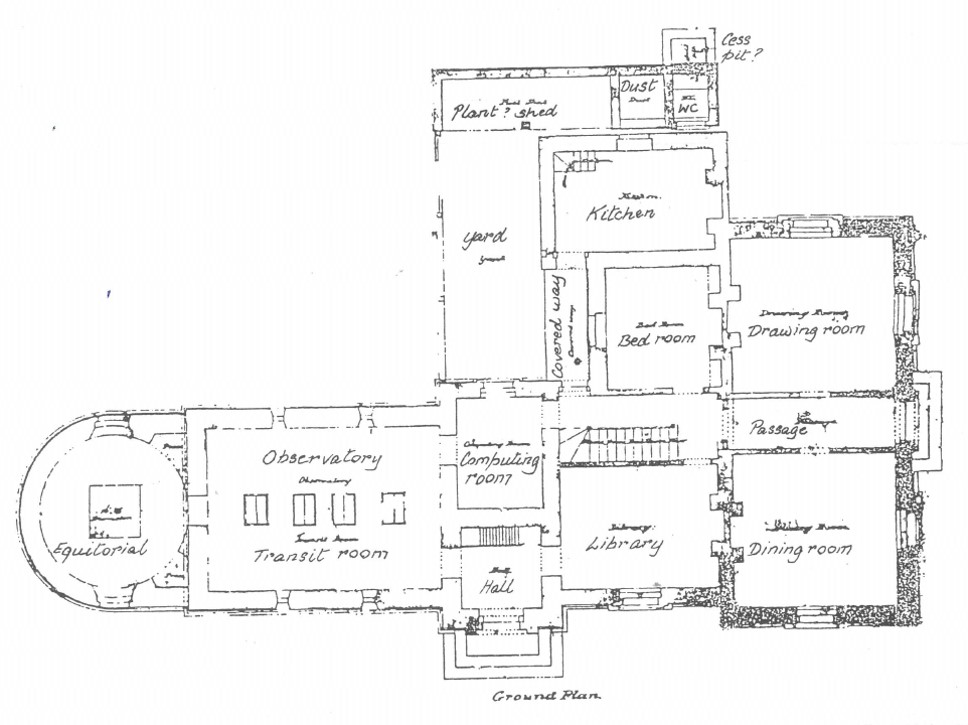

Despite the delays Scott moved in to the residence in April 1858. And on June 5, 1858 he was able to drop the time ball for the first time, initially at noon but later at 1pm.
We now celebrate Sydney Observatory’s birthday on June 5 each year. In 2018, in preparation for the 160th anniversary of that first time ball drop, the ball and its mast were removed for restoration. The ball was panel-beaten back to a, more or less, spherical shape, corrosion removed, cleaned and painted. Conservator Tim Morris worked hard to clean, repair and restore the mechanism. After two months the time ball and mast were returned and a further week of work brought it into operational condition. The restoration work was generously supported by donors to the 2017 Sydney Observatory annual appeal.
On June 5 2018, Sydney Observatory’s 160th anniversary, we recommenced the daily time ball drop. And we extend our thanks to donors, staff and visitors for ensuring this important part of NSW history continues to operate for many years to come.
Written by Andrew Jacob
Curator, Sydney Observatory
June 2018
Acknowledgements
I thank NSW State Archives for permission to post the images of the tender invitation, tender and contract. Mel Hulbert photographed the documents and Kate Lee brought them to my attention in the first place after being contacted by a descendant of Charles Bingemann.
This post made use of Harley Wood’s history of Sydney Observatory “Sydney Observatory 1858 to 1958”, Sydney Observatory Papers No 31.
References
“Sydney Observatory – A conservation plan for the site and its structures”, J.S. Kerr, MAAS 2002.
Schwager Brooks and Partners Pty Ltd, “The Sydney Observatory Conservation Plan”, for NSW Public Works, Sydney 1987.